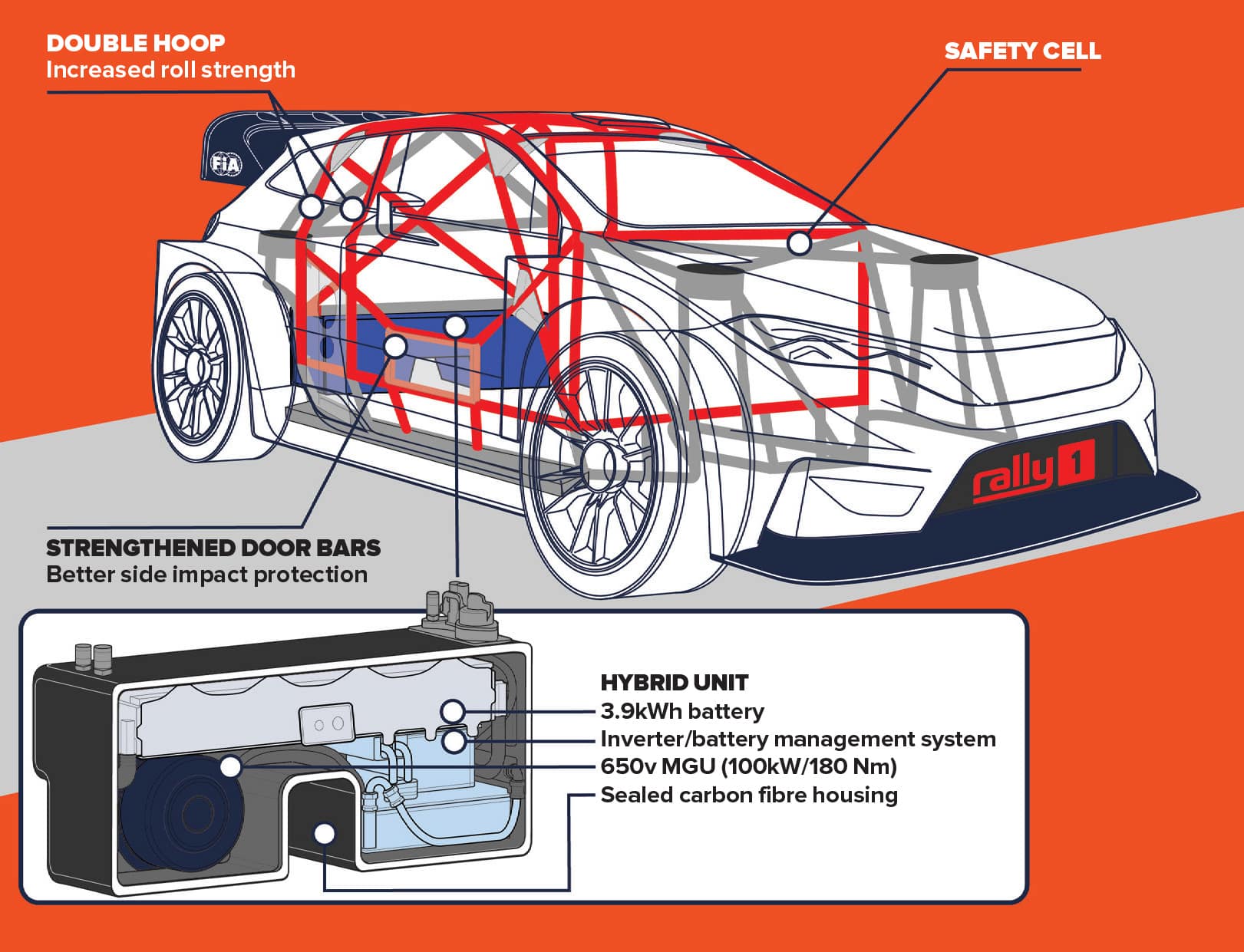Jump start for WRC's hybrid Rally1 cars
There’s a revolution in the World Rally Championship, with 2022 welcoming the electric-assisted 500bhp Rally1 era. David Evans directs us through the changes and reveals what we can expect from this new generation of cars

M-Sport Ford’s hybrid Puma Rally1 replaces the Fiesta WRC, which had taken three world titles since 2017: two drivers’ and one constructors’
Getty Images
Not since Audi asked if anybody minded four-wheel drive and turbocharging being used on the stages has such significant change come to the World Rally Championship. From the series’ inception in 1973, internal combustion has powered it every inch of the way. January’s Rally Monte-Carlo will change all of that. Hybrid has arrived. The next generation is ready.
When Sébastien Ogier leads the class of 2022 through Casino Square at the start of the season, the full force of the so-called Rally1 regulations will be felt. Or heard. Or not heard, to be precise.
Crossing the start ramp in full electric mode means, for the first time ever, the WRC cars won’t disturb the early-evening Martinis outside the Café de Paris. The moment will be silent. And seminal.
World Rally Cars, the top category since 1997, has been replaced by Rally1 – the FIA’s way of simplifying rallying’s pyramid; now, Rally1 is the muddy equivalent to circuit-bound Formula 1.
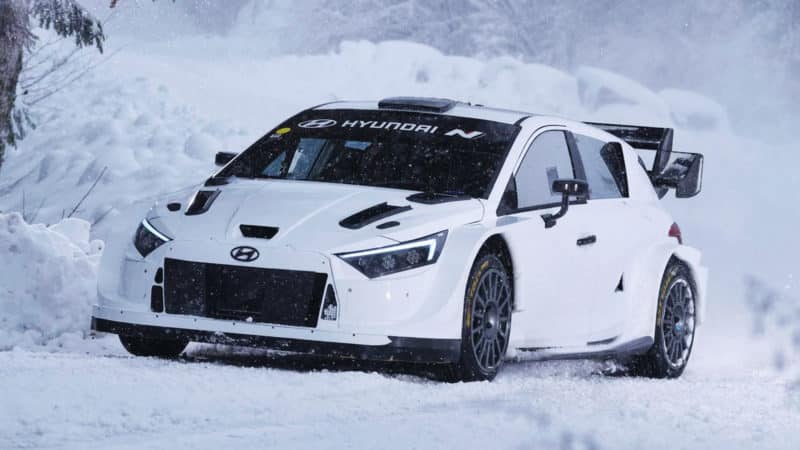
The styling of the Hyundai i20 N Rally1 beats the Puma, but mean looks don’t guarantee titles
The only thing that stays the same from last season is the engine. The blown 1600cc four-cylinder motor still offers just shy of 400bhp, but that’s going to be topped up by a 100kW electric motor that is powered by a 3.9kWh battery.
When internal combustion and electricity combine, a 2022 Rally1 car will be fired from the line by more than 500bhp, making them the most powerful top-tier cars since the heady – if unsustainable – days of Group B.

Once they’re out of the stage at the other end, the crews will be penalised if unable to fulfil their full electric commitments on prescribed quiet sections of the route through towns and cities and also in the service park itself.
Arriving back in service, the cars will be given a plug-in charge which can take them to 80% battery in just 20 minutes. The hybrid parts are centrally sourced by the FIA and supplied by German firm Compact Dynamics, with the battery coming from Kreisel – an Austrian company. All the components, the MGU, battery and inverter control unit are housed in a carbon-fibre box which has been tested to withstand a 70g impact.

Sébastien Ogier testing Toyota Gazoo’s Yaris Rally1 in the French Alps in December
Enjoying around 520bhp from a four-wheel-drive rally car doesn’t come for free this season. The kit’s going to weigh in at around 100kg – and then there’s the driving part. It’s more complicated.
“Hybrid is definitely changing the way we work,” says M-Sport Ford team leader Craig Breen. “We have to think about how we drive these cars from the recce, even before the rally has started. When you have the hybrid, you want to make the best use of the strategy and make sure you have the full boost in the sections of the stage where you’re going to really feel the benefit. There’s going to be a change in the way we write notes – we’ll need to have the co-driver telling us when we’re coming to a place where we want to deploy the battery. For sure, this is going to be a big learning curve for all of us.”
The actual deployment of hybrid will vary from team to team and remains a closely guarded secret. But it’s not just the inclusion of hybrid that changes the game for the upcoming season – the cars themselves are radically different beneath the skin. In an effort to further enhance safety, the FIA led the research and development of an all-new tubular chassis. For the first time since the end of 1986, the World Rally Championship will be won by something spaceframe. The difference today is that this is driven by the desire to place the crew in a controlled environment rather than by a need to save weight and drive performance.
Former WRC driver Matthew Wilson completed much of the early testing on M-Sport Ford’s Puma Rally1 hybrid. He’s convinced by the new regulations.
“There’s no doubt you feel safer in there,” says Matthew, the son of M-Sport managing director Malcolm Wilson. “You’re further inside the car, further from a possible point of impact in an accident and you’ve got this huge tube in the cage where the B pillar would be. Having something like that alongside you definitely gives you more confidence. Full credit here to the FIA. They’ve done a very good job.”
The numbers from the FIA’s crash testing bear out that feeling. A side impact with a 10in pole would result in 51% less intrusion in this year’s cars compared with last year. A front-in crash against a rigid object resulted in 70% less intrusion into the bulkhead area protecting the crew’s feet and legs. And the roof will absorb energy 115% better than a current car. Those are numbers worth having when you’re flying 50 metres between Finnish trees at 100mph.
And the same tubular chassis sits beneath the bodywork of all three manufacturer cars. What’s missing from beneath the bodywork is much of the transmission technology which has helped keep World Rally Cars stuck to some of the most challenging roads anywhere on planet earth. For this year, there’s no electro-hydraulic magic in any of the differentials. They’re all mechanical; Rally1 means finding a set-up compromised between traction and turn-in. The days of flicking a switch to jump from one transmission map to another when the going gets slippery or grippy are gone.
A five-speed gearbox with a sequential manual shift replaces a six-speeder controlled by paddle and, just to focus the mind further, there’s a fairly significant clampdown on the aerodynamics on the cars. Rally1 takes downforce back to 2017 levels, before the last generation of World Rally Cars grew dive planes and splitters in every direction.
Batteries included
Hybrid drivetrains are to be used in World Rally Cars for the first time, and there are a few safety upgrades too
It’s fair to say not everybody loves the change from World Rally Car to Rally1. Hyundai Motorsport man Thierry Neuville’s was among the loudest voices questioning the shift. “I definitely don’t agree on all those changes which are done by FIA and manufacturers all the time for moving things, just to make the car less exciting or more dangerous to drive, and at the end it could be more expensive than anything else we have seen so far in the WRC,” he said in September. “So it’s a pity. Plus we have seen they have removed quite a lot of the aerodynamics from the cars so you hope to – at least – have some similar figures as before which would have been already difficult, but now probably going to have R5 [performance] figures from the car. It’s most definitely the wrong way for me and I don’t agree.”
But the sport has to look at the bigger picture – and the FIA’s own PurposeDriven strategy dictates that a 360-degree approach to sustainability is what’s needed for the WRC’s future. It is hoped that by introducing an electric element to the cars the sport will not only be more in tune with the times but also improve the sight of petrol-powered cars churning through forest stages across the world. Is it feeling the heat from series like Extreme E? Unlikely right now. But is hybrid far enough? Maybe. It’s hard cutting-edge technology, but when you combine battery power potential with the fact that the WRC is the first FIA series where all competitors will run sustainable, fossil-free fuel, then the green credentials stand up.
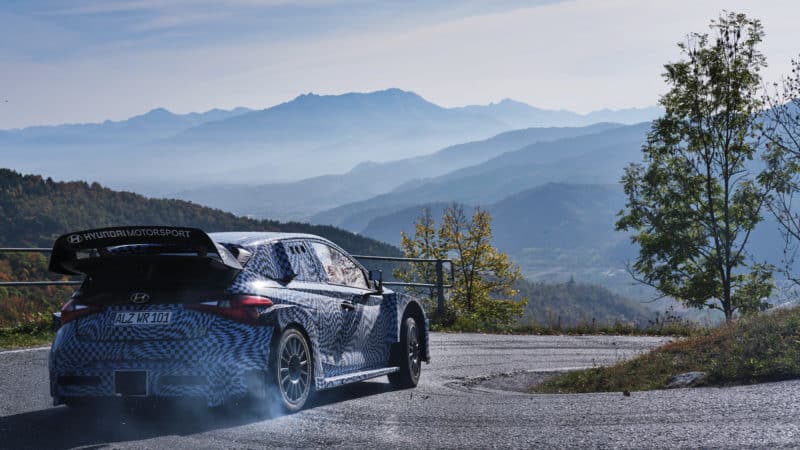
Thierry Neuville, a 2022 title favourite, gets to grip with the new system
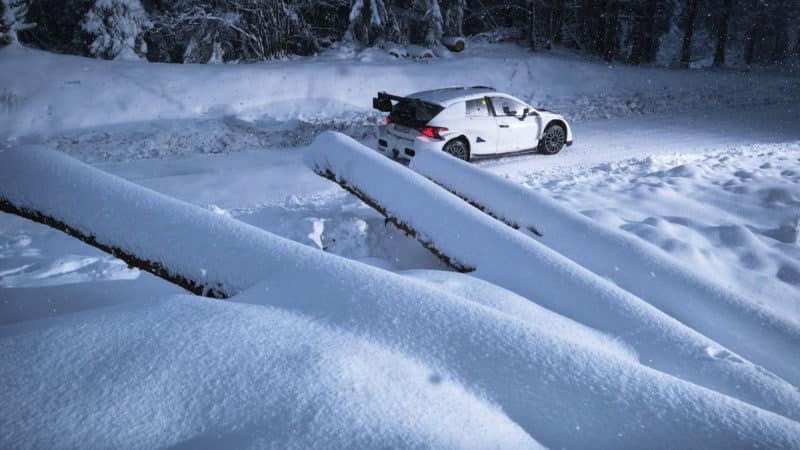
The Hyundai i20 N in snow
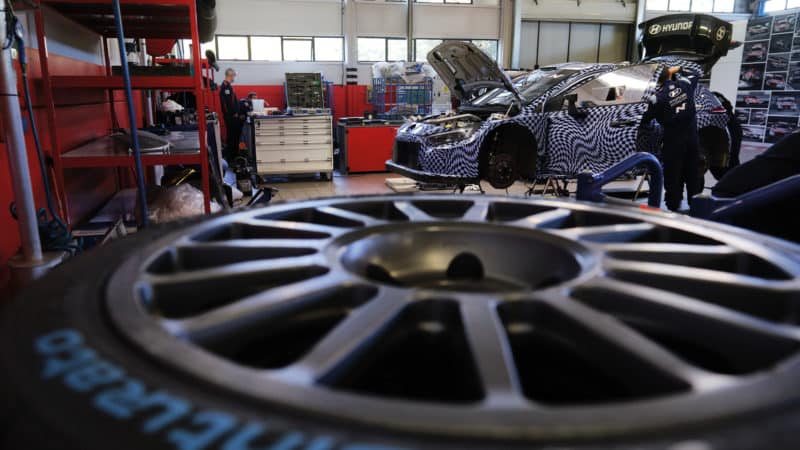
Tinkering with the Hyundai
The biggest technical shake-up in the history of the WRC will bring one thing: unpredictability. Who’s going to win Rallye Monte-Carlo? Honestly speaking… nobody has a clue. The start of the last generation meant a bigger turbo restrictor, more aero, wilder-looking cars and a bit more transmission tech. It delivered the fastest ever rally cars, but it was still an evolution of an engine category which had been deployed in the WRC since 2011.
This year it’s a revolution – and a proper one at that. M-Sport’s Ford Puma was the first car up and running, a good month ahead of Toyota’s Yaris. Hyundai’s i20 N was the latest to the table by some distance. But what does any of that mean? We’ll have to wait until the season’s first stage to find out. What we do know is that the teams are evenly matched. Hyundai has statistically the strongest lead driver pair in 2019 world champion Ott Tänak and Thierry Neuville. Oliver Solberg and Dani Sordo share the third Hyundai, with the 20-year-old Swede expected to compete with a higher frequency than the Spaniard.
Two-time championship runner up Elfyn Evans heads the Toyota effort with Kalle Rovanperä starting his third full-time campaign in a Yaris. Like Hyundai, Toyota shares a third seat between Sébastien Ogier and Esapekka Lappi. Ogier surely starts in Monte Carlo as favourite for a ninth success in his native French Alps. Admittedly, Ogier’s experience of the Round 1 roads which lie ahead is negated to some degree by his lack of time in the car. His first test, shortly after last year’s season finale in Monza, was canned after Evans crashed the test car. He then drove for a couple of days in December before his pre-event set-up running in January.
Toyota wanted its mountain expert in the car for Monte, but where we will see Ogier again remains dependent on how busy he gets with a possible World Endurance Championship programme – including a possible Le Mans 24 Hours drive with Toyota – and how much time he’s willing to spend away from his family.
Breen leads a resurgent M-Sport squad, with Sébastien Loeb tipped to join the British challenge at the time of writing. The Ford squad will be backed up by the 25-year-old Mancunian Gus Greensmith and, again to be confirmed, Adrien Fourmaux.
While Breen has still to complete his first full season in the series, he’s not short of experience and is expected to play his part in a drivers’ championship battle which is tipped to be more open and unpredictable than in recent years. It’s also going to be only the second title won since 2004 by a driver who’s not French and called Sébastien.
